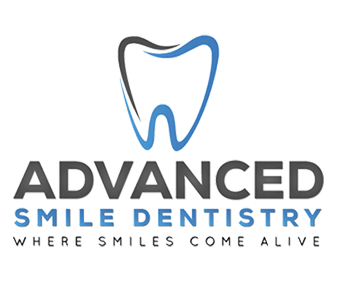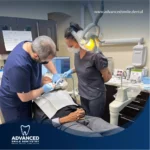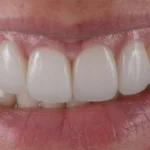Deep Cleaning Teeth

#1What Is A Deep Teeth Cleaning?
A deep cleaning teeth, also known as scaling and root planing, is a dental procedure that goes beyond the regular cleaning (prophylaxis) you receive during your routine dental check-ups.
It is typically recommended for individuals with gum disease, specifically when there’s a significant buildup of plaque, tartar (calculus), and bacteria below the gumline.
Gum disease, also known as periodontal disease, occurs when bacteria in dental plaque cause inflammation of the gums. In its early stage, it’s called gingivitis, which is characterized by red, swollen, and bleeding gums.
A Dental deep cleaning involves two main procedures:
- Scaling: The dental hygienist or dentist uses special instruments to remove plaque, tartar, and bacterial deposits from the surfaces of your teeth, both above and below the gumline. This process aims to eliminate the sources of inflammation and infection.
- Root Planing: After scaling, the dental professional smooths out the surfaces of the tooth roots to discourage the accumulation of bacteria and help the gums reattach to the teeth properly. This process also helps to prevent further progression of gum disease.
A deep teeth cleaning can be more intensive and take longer than a regular cleaning because it involves cleaning areas of the teeth and gums that are harder to reach.
It might also require local anesthesia to ensure your comfort during the procedure, especially if you have sensitive or inflamed gums.
If you suspect you have gum disease or are advised to undergo a deep teeth cleaning, it’s crucial to follow your dentist’s recommendations and maintain good oral hygiene practices to keep your gums and teeth healthy.
#2What is The Cost of Deep cleaning teeth?
The cost of a deep teeth cleaning can vary widely depending on several factors, including the extent of the cleaning needed, the region or location where you live, the dental office’s pricing, and whether dental insurance covers part of the cost.
On average, the cost of a deep cleaning can range from $200 to $900 per quadrant (quarter of the mouth) or more, but it can be higher or lower depending on the circumstances.
Please contact us for a more exact price.
#3Is a Dental Deep Cleaning Necessary?
A dental deep cleaning not a standard procedure for everyone and is usually performed when there’s evidence of plaque, tartar buildup, and inflammation below the gumline. Here are some factors that might indicate the necessity of a deep teeth cleaning:
- Gum Disease Symptoms: If you have symptoms of gum disease such as red, swollen, bleeding, or receding gums, it’s a sign that there may be an accumulation of bacteria and plaque below the gumline. A dental deep cleaning might be recommended to address these issues.
- Gum Pockets: Your dentist measures the depth of the spaces (pockets) between your gums and teeth during a dental examination. Deeper pockets can indicate the presence of gum disease and the need for a deep cleaning to remove the bacterial deposits within these pockets.
- Tartar Buildup: If there’s a significant amount of tartar (hardened plaque) on the tooth surfaces and below the gumline, a regular cleaning might not be enough to address the problem. A deep cleaning can effectively remove these deposits.
- X-ray Findings: X-rays can show if there’s bone loss around the teeth, which is a common sign of advanced gum disease. If bone loss is detected, a dental deep cleaning might be necessary to help manage the disease.
- Gum Bleeding and Inflammation: If your gums bleed easily when you brush or floss, or if they are inflamed and tender, it’s a sign of gingivitis or early gum disease. A deep cleaning can help alleviate these symptoms and prevent the progression of the disease.
It’s important to remember that only a qualified dentist or dental hygienist can accurately assess your oral health and determine whether a deep teeth cleaning is necessary.
#4Dental Deep Cleaning Before and After

Teeth Cleaning Before and After
#5What are Disadvantages of Deep Cleaning Teeth?
While deep teeth cleaning (scaling and root planing) is a common and effective dental procedure for treating gum disease and maintaining oral health, there are a few potential disadvantages or considerations to keep in mind:
- Discomfort: Deep teeth cleaning can cause some discomfort, especially if you have sensitive gums or if there’s significant inflammation. The process involves cleaning below the gumline, which might lead to temporary soreness or sensitivity.
- Anesthesia: Local anesthesia is sometimes used during deep teeth cleaning to ensure patient comfort, especially if the gums are inflamed or if the procedure is extensive. While this helps manage pain, some individuals might have concerns about receiving anesthesia.
- Multiple Appointments: Depending on the severity of your gum disease, you might need to undergo multiple appointments for deep cleaning teeth. This can be time-consuming and may require you to visit the dental office more frequently.
- Expense: Deep teeth cleaning can be more costly than routine cleanings due to the additional time and effort involved. However, the cost can vary depending on factors such as the extent of the cleaning and the region you’re in.
- Gum Sensitivity: After a deep cleaning, your gums might be more sensitive than usual. This sensitivity could make brushing, flossing, and consuming hot or cold foods and beverages temporarily uncomfortable.
- Risk of Infection: While the goal of deep teeth cleaning is to remove bacteria and prevent infection, there’s a small risk of infection due to the manipulation of the gum tissues during the procedure. However, dental professionals take precautions to minimize this risk.
- Temporary Changes in Appearance: In some cases, after a dental deep teeth, you might notice slight changes in the appearance of your teeth or gums, such as a slight change in the gumline. These changes are usually temporary and should improve as your gums heal.
It’s important to note that the potential disadvantages of deep teeth cleaning are generally minor and temporary compared to the benefits of addressing gum disease and maintaining oral health.
#6Is gaps in Teeth After Deep Cleaning Normal?
Gaps between teeth are generally not a normal outcome of a teeth cleaning (scaling and root planing).
The primary purpose of a deep cleaning is to remove plaque, tartar, and bacterial deposits from the surfaces of teeth and below the gumline to treat gum disease and prevent its progression.
It’s important to note that any changes in spacing that occur after a deep cleaning teeth are usually minimal and temporary.





